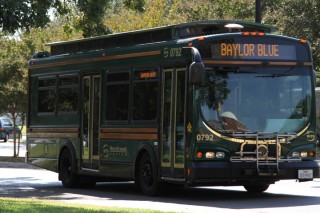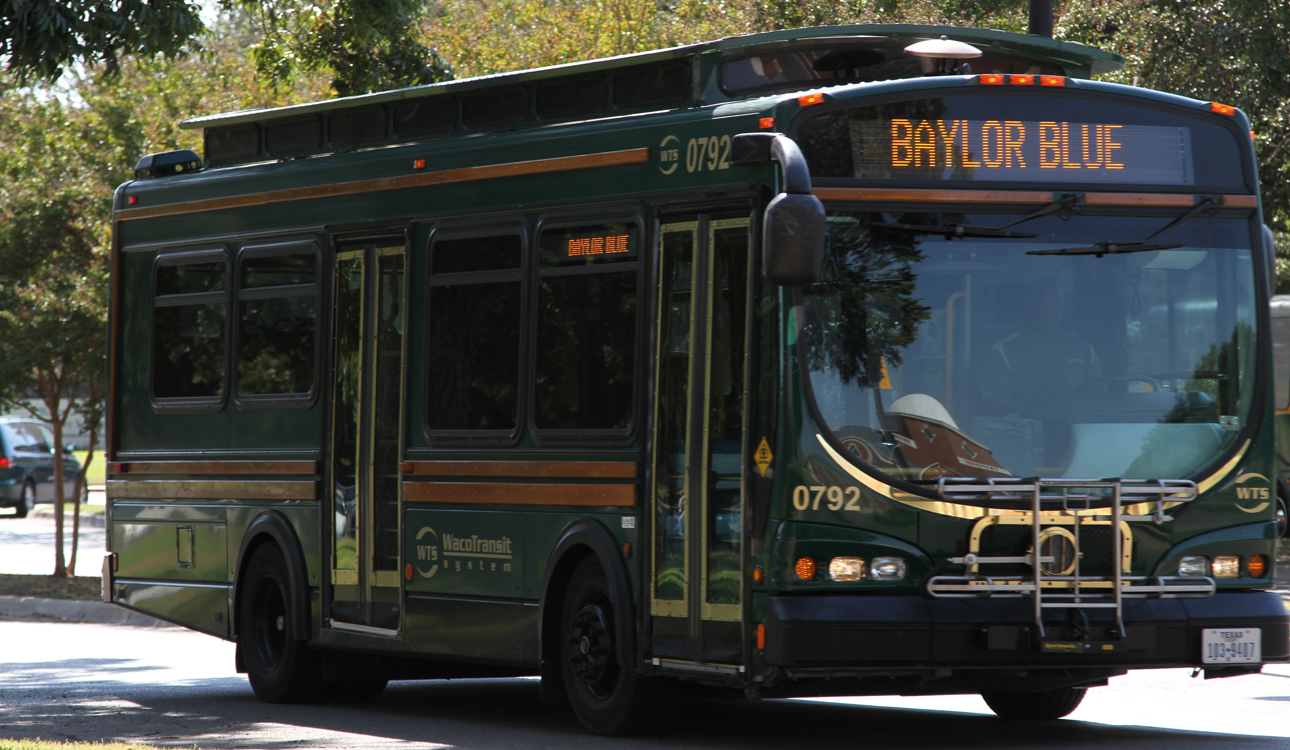
By Jordan Hearne
Reporter
With the constant conversation about global warming and carbon footprints, students have an opportunity to help the environment by using public transportation .
The Baylor University Shuttle (BUS) is a transportation system operated by Waco Transit and managed by the Baylor department of parking and transportation services.
It is a free service students can use to get around campus while simultaneously reducing negative impact on the environment.
Smith Getterman, sustainability coordinator for Baylor, said it is a better option for a student to take mass transport than for every individual to drive their car.
“The more people who use the shuttle, the better it is for campus overall. The air is cleaner, and there are fewer toxins,” Getterman said.
He said he hopes students will take advantage of this opportunity, as many colleges don’t provide access to a free shuttle system.
Accoring to the U.S. Environmental Protection Agency the atmosphere is made up of gases such as carbon dioxide, methane and nitrous oxide, and the buildup of these gases can cause climate change.
If there is no significant change in the high-level of these gases, climate models have predicted possible temperature increases and flooding due to rising sea levels consistent with global warming.
According to a 2007 article by the American Public Transport Association, an individual switching to public transit can reduce his or her daily harmful carbon dioxide emissions by 20 pounds.
The levels of carbon dioxide produced by transportation is increasing. Greenhouse gas emissions grew 17 percent from 1990 to 2007, according to the EPA.
Students also have to take into consideration their normal routine when driving to class.
The simple act of trying to park on campus wastes fuel through inefficient engine performance, producing a greater amount of carbon emissions than driving alone.
Matt Penney, director of parking and transportation services, said a common habit when parking on campus is “vulturing.”
This happens when students circle around garages and parking lots waiting for a spot to open up; it’s at those moments that car engines perform at their worst.
LEaP, an organization dedicated to “Lowering Emissions and Particulates” from vehicles, says idling is more harmful to the environment than driving.
According to LEaP’s website, idling causes the engine to use more fuel than necessary, reducing the car’s mileage over time and producing large amounts of carbon dioxide from burning through gasoline.
Both the parking and transportation services department are working to promote shuttle use across campus.
“We’re trying to get the word out through Facebook, Twitter and student orientation,” Getterman said.
Students have several options when riding the bus. There are currently three routes that travel around different areas of campus.
Buses run in continuous loops around places like Jesse H. Jones Library and in front of the McLane Student Life Center on class days from 7:30 a.m. to 5:30 p.m.
The Baylor Downtown Area Shuttle (DASH) gives students access to Waco’s downtown amenities, starting at Penland Hall and stopping at Ninfa’s and the Dr Pepper Museum.
Transportation services is trying to make using the bus system more convenient and easier to navigate than in past years.
Bus schedules can be found online on the Baylor University Shuttle website or at certain bus stop locations with new cell phone scanning systems.
Students with a mobile QR code reader application can scan these black and white images and instantly pull up the schedule of the bus that stops at that specific spot.
The numbers show that Baylor’s work is paying off.
“Last year, bus ridership went up 30 percent, and the DASH ridership increased by 40 percent,” Penney said. “That’s phenomenal.”
Switching methods of transportation now can be a big step in preventing environmental damage in the future.
“Switching to public transit gives a person the opportunity to immediately become part of the solution to help reduce carbon dioxide, a harmful greenhouse gas,” said William W. Millar, president of APTA, in a 2007 APTA article.
If sustainability and campus health are not enough motivation to ride the bus, Penney said, the stress associated with parking could be lifted by taking the shuttle, as well as the potential for getting parking tickets.






